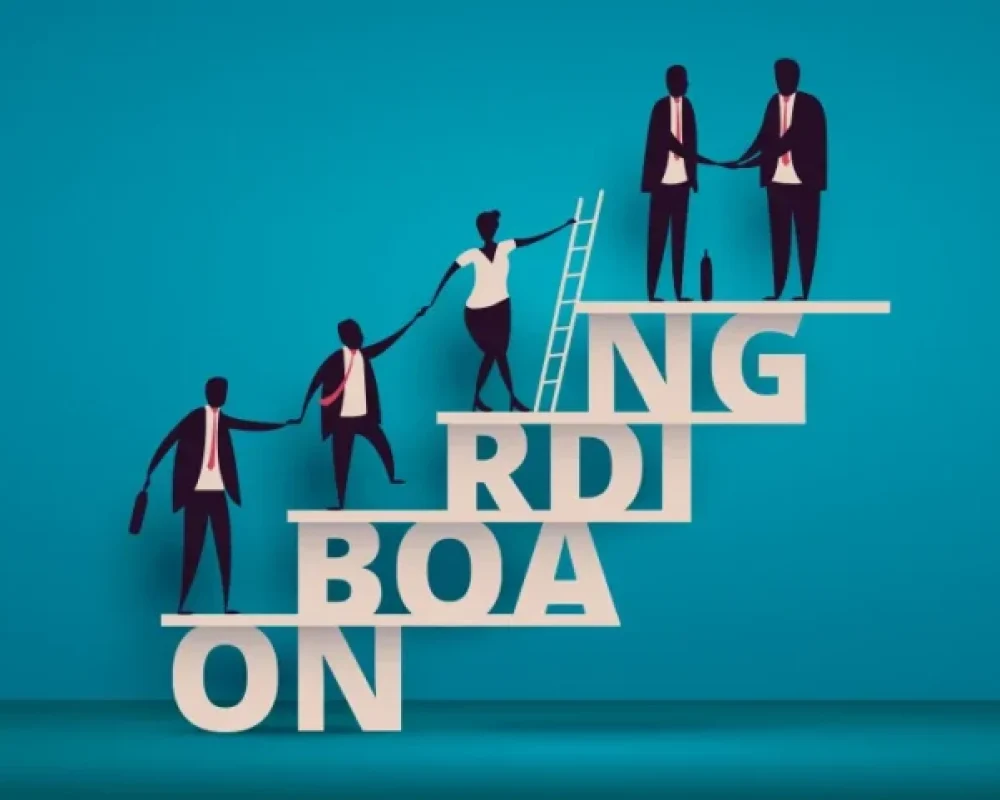How to Build an Effective Onboarding Program for New Hires
An effective onboarding program is critical for integrating new hires into your company’s culture, boosting productivity, and improving retention. Onboarding goes beyond paperwork and training—it’s about making new employees feel welcomed, supported, and set up for success. When done right, onboarding can significantly enhance employee engagement and shorten the time it takes for new hires to become fully productive.
Here’s a step-by-step guide to building an effective onboarding program:
1. Start Before Day One
The onboarding process should begin before the employee’s first day. Preboarding helps ease first-day nerves and sets a positive tone.
Key preboarding steps:
-
Send a welcome email with first-day instructions, dress code, schedule, and contact information.
-
Provide access to digital HR portals or paperwork to complete administrative tasks in advance.
-
Assign a point of contact or onboarding buddy for questions.
-
Ship or prepare necessary equipment (laptop, phone, access badges, etc.).
This early engagement shows professionalism and helps new hires feel valued even before stepping into the office.
2. Create a Structured Onboarding Plan
A structured onboarding plan outlines the employee’s first week, first month, and first 90 days. It should include a mix of training, social integration, and job-specific tasks.
Key components:
-
Day 1 agenda: Introductions, office tour, HR orientation, and initial setup.
-
Week 1: Introduction to the team, overview of company values, policies, and systems.
-
First 30-90 days: Role-specific training, goal setting, regular check-ins, and feedback sessions.
Providing a clear roadmap helps reduce uncertainty and builds confidence in their role.

3. Emphasize Company Culture and Values
New employees should understand your company’s mission, vision, and core values early on. This fosters alignment and helps them feel connected to the broader purpose of the organization.
How to do this:
-
Share stories or examples that demonstrate company culture in action.
-
Encourage leadership to welcome new hires and discuss cultural expectations.
-
Incorporate values into onboarding presentations, meetings, and documents.
When employees understand and connect with the culture, they’re more likely to stay engaged and committed.
4. Assign Mentors or Onboarding Buddies
Pairing new hires with an experienced colleague can ease the transition and accelerate the learning process. Onboarding buddies help answer questions, introduce coworkers, and provide insights that aren’t always covered in formal training.
Benefits of buddy programs:
-
Faster social integration
-
Reduced feelings of isolation
-
Informal guidance on team norms and expectations
Make sure the buddy is trained and available to provide consistent support during the onboarding phase.
5. Provide Role-Specific Training
Generic training only goes so far. Tailor onboarding content to the new hire’s specific role so they can quickly become productive.
Effective role-specific training includes:
-
Job responsibilities and key deliverables
-
Tools, software, and systems used in the role
-
Workflow processes and reporting structures
-
Cross-functional collaboration expectations
Use a combination of documents, hands-on tasks, video tutorials, and live sessions to cater to different learning styles.
6. Set Clear Expectations and Goals
Early alignment on job expectations, performance metrics, and short-term goals sets the foundation for success. Clarify what success looks like and how performance will be evaluated.
Tips:
-
Review the job description and responsibilities.
-
Use the SMART goal framework (Specific, Measurable, Achievable, Relevant, Time-bound).
-
Discuss early wins and milestones.
This ensures new hires feel empowered and understand how their work contributes to the company’s success.
7. Incorporate Regular Feedback and Check-Ins
Frequent communication is key during the onboarding period. Schedule regular check-ins to answer questions, provide feedback, and gauge how the new hire is adjusting.
Check-in frequency:
-
First week: Daily or every other day
-
First month: Weekly
-
First 90 days: Biweekly or monthly
These touchpoints create a safe space for open dialogue and help managers proactively address concerns.
8. Use Technology to Streamline Onboarding
Leverage onboarding software or learning management systems (LMS) to simplify the process, automate tasks, and track progress. These tools can deliver training modules, manage documentation, and offer consistent communication.
Popular onboarding tools include:
-
BambooHR
-
Workday
-
Gusto
-
Trainual
-
Trello or Asana for onboarding task lists
Digital onboarding enhances efficiency and ensures a smoother experience, especially for remote or hybrid teams.
9. Measure and Improve the Program
Collect feedback from new hires and managers to identify what’s working and what needs improvement. Use surveys, interviews, or informal conversations to gather insights.
Important metrics to track:
-
Time to productivity
-
Retention rate after 90 days and 1 year
-
New hire satisfaction scores
-
Completion of onboarding milestones
Continuously refining your onboarding process based on real feedback ensures it remains effective and relevant.
10. Extend Onboarding Beyond 90 Days

True integration doesn’t happen overnight. Extend onboarding efforts beyond the first few weeks to reinforce learning and deepen engagement.
Consider including:
-
Continued mentoring or coaching
-
Career development discussions
-
Cross-departmental introductions
-
Opportunities for early involvement in projects
Longer onboarding helps new hires grow more confident in their roles and feel a stronger sense of belonging.
Conclusion
A well-designed onboarding program is more than just a formality—it’s an investment in your company’s future. By welcoming new hires thoughtfully and providing them with the tools, knowledge, and support they need, you foster engagement, boost productivity, and lay the foundation for long-term success. Whether your team is remote, in-office, or hybrid, a structured and human-centered onboarding process is essential to building a strong, unified workforce.



